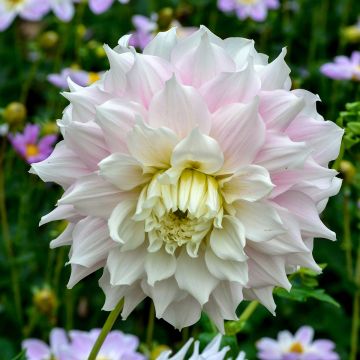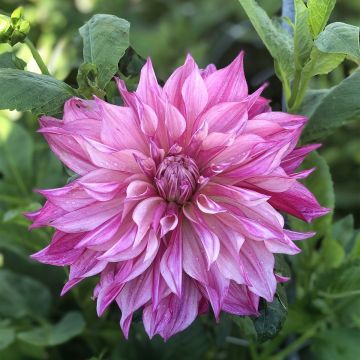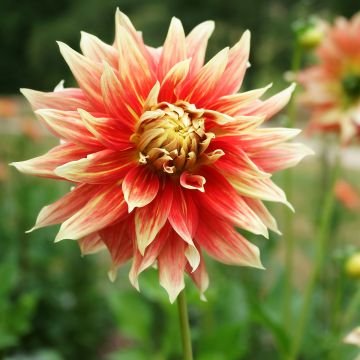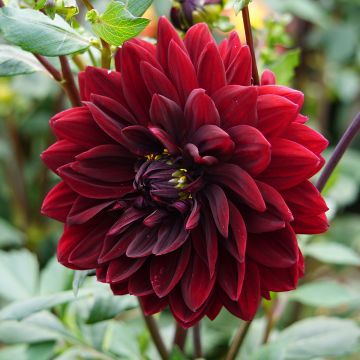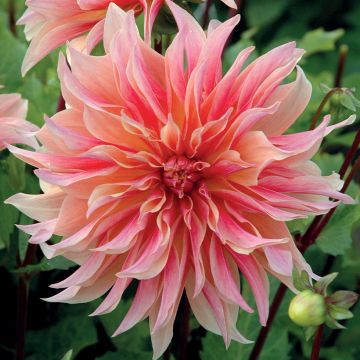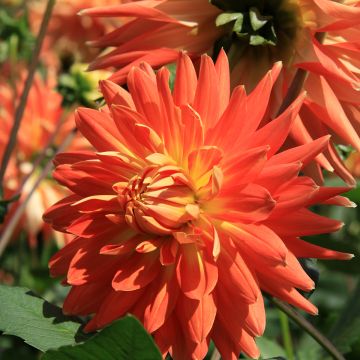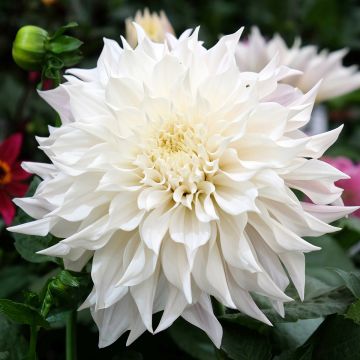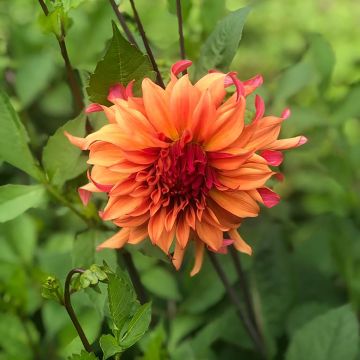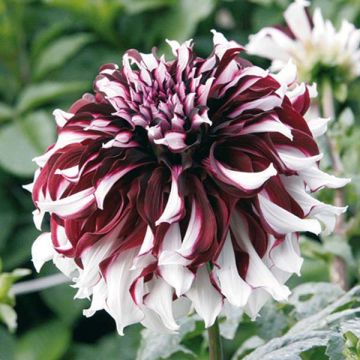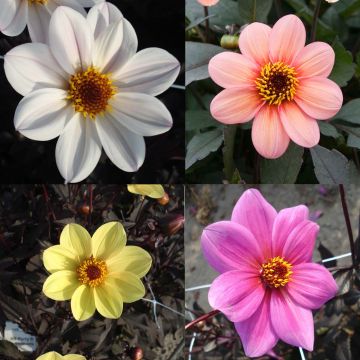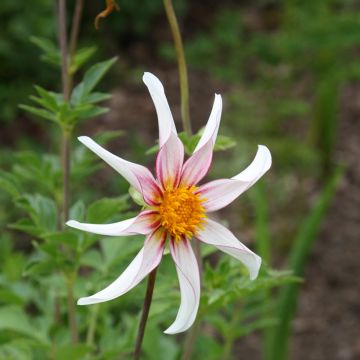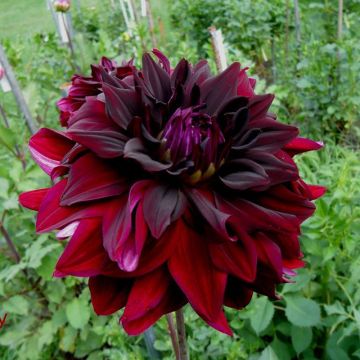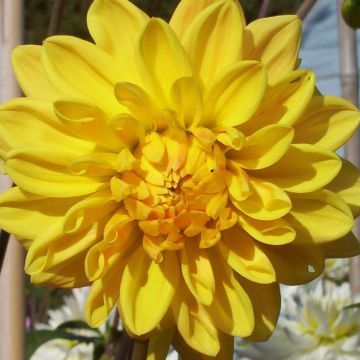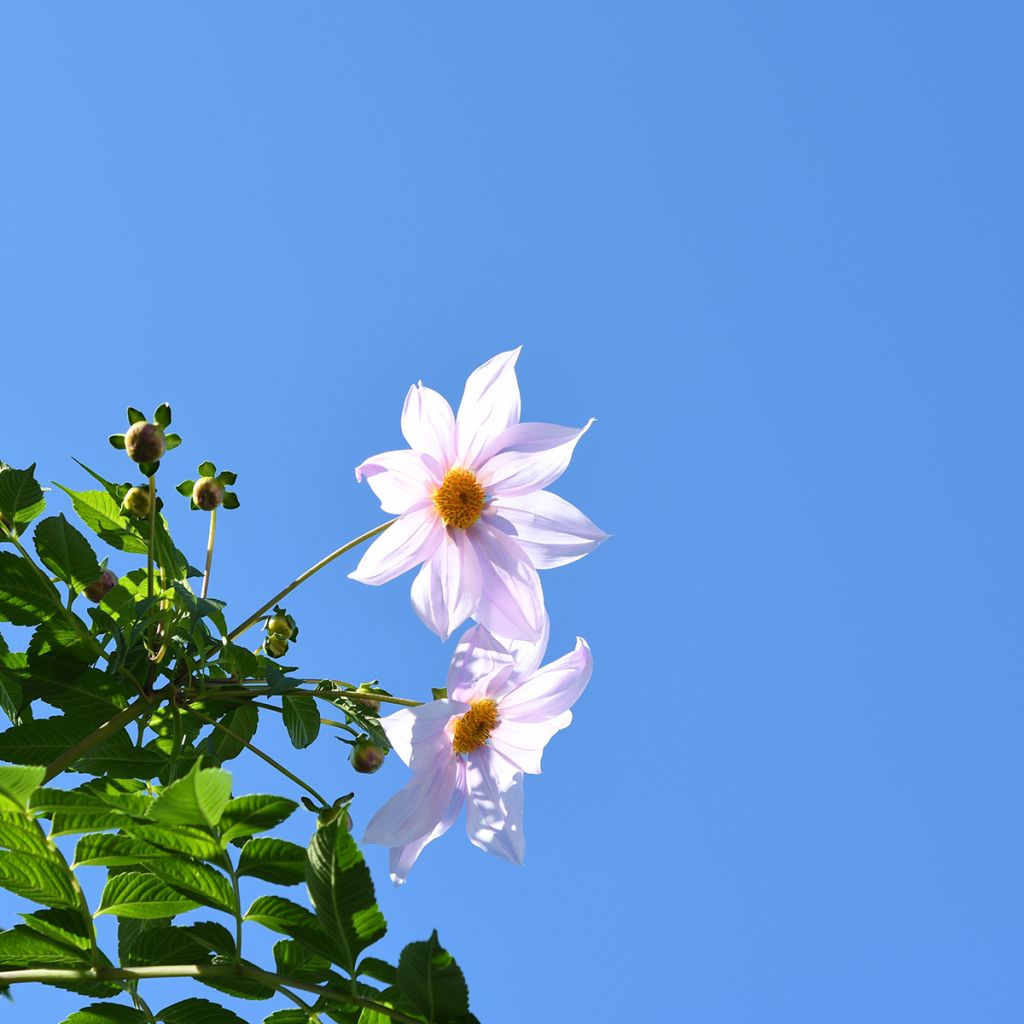

Dahlia imperialis White - Giant Dahlia
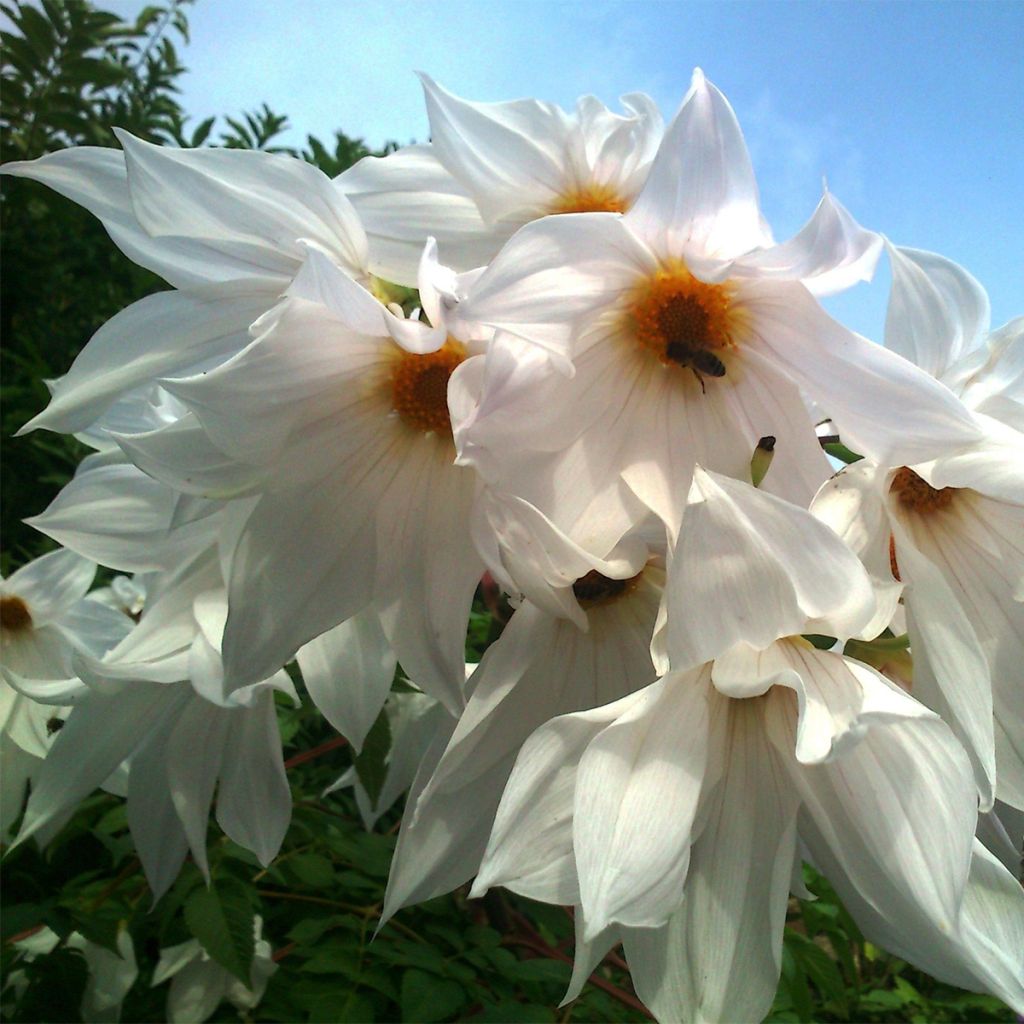

Dahlia imperialis White - Giant Dahlia
Dahlia imperialis White - Giant Dahlia
Dahlia imperialis White
Tree Dahlia, Giant Dahlia
Very disappointed, the bulb didn't produce anything.
Aline , 27/08/2024
Special offer!
Receive a €20 voucher for any order over €90 (excluding delivery costs, credit notes, and plastic-free options)!
1- Add your favorite plants to your cart.
2- Once you have reached €90, confirm your order (you can even choose the delivery date!).
3- As soon as your order is shipped, you will receive an email containing your voucher code, valid for 3 months (90 days).
Your voucher is unique and can only be used once, for any order with a minimum value of €20, excluding delivery costs.
Can be combined with other current offers, non-divisible and non-refundable.
Why not try an alternative variety in stock?
View all →This plant carries a 6 months recovery warranty
More information
We guarantee the quality of our plants for a full growing cycle, and will replace at our expense any plant that fails to recover under normal climatic and planting conditions.
Does this plant fit my garden?
Set up your Plantfit profile →
Description
Dahlia imperialis 'White' is rarer than the usual species with pink flowers. It is also slightly less vigorous, but is just as wonderful. This tree-like plant charms with its bamboo-like appearance, lush foliage, and beautiful autumn flowering. However, it is sensitive to cold and wind. It bears panicles of flowers in large, simple, and unpretentious heads, which can be admired from below.
Dahlia imperialis 'White' belongs to the large Asteraceae family, just like our garden dahlias. Its wild ancestor is native to the high plateaus and mountains of Central America, from Mexico to Guatemala, where it is found at altitudes between 1500 and 1700m (4921 and 5577ft). It is an herbaceous plant with semi-woody stems, perennial thanks to its large edible tuber with an artichoke-like taste. Its cold resistance is quite limited. Its stump is destroyed below -5°C (23°F). This dahlia will, however, be able to survive short periods of frost at around -8°C (17.6°F) if the plant is protected with thick mulch and planted in a warm and dry location.
This tree-like dahlia starts quite late in spring, depending on the region. Its growth rate is rapid and it can reach 2 to 3m (7 to 10ft) in height and 1 to 1.25m (3 to 4ft) in width in just a few months. Powerful, hollow, green-coloured herbaceous stems emerge from the ground. They have a circumference of up to 6 to 8cm (2 to 3in). They are marked by prominent rings, like bamboo canes. Each stem shoots up and branches out. It bears large leaves divided into 7 ovate, toothed leaflets, carried by purple petioles. Their colour is a deep green on the upper side, more glaucous underneath. The flowering is induced by the shortening of the day length. It usually occurs in October-November, or even as early as September (depending on the climate). At the top of the stems, inflorescences composed of 30 to 35 flowers are arranged in heads on an adult plant. Each head measures 10 to 12cm (4 to 5in) in diameter. They are slightly inclined, somewhat campanulate, and not fully open. Their style somewhat resembles single-flowered decorative dahlias. The central disk of the head is composed of tiny yellow-orange florets. It is surrounded by a white collar of ligules or 'petals' that are somewhat crumpled. The above-ground vegetation will be destroyed by the first frosts. The plant goes into dormancy underground in winter.
It is an extremely decorative plant that should be planted in a warm and sunny position, sheltered from wind and cold. Dahlia imperialis 'White' deserves a prime location in the garden. Place it in front of a screen of bushes that will cut the wind, near the entrance of the house against a wall that will protect it, or even in a corner formed by two facades. It can be combined with exotic plants, such as banana trees, palm trees, giant cannas, or even castor oil plants. In a romantic setting, its flowers will complement autumn-flowering shrubs, such as Aralia elata, Arbutus unedo (strawberry tree), or even autumn camellias.
Plant habit
Flowering
Foliage
Botanical data
Dahlia
imperialis
White
Asteraceae
Tree Dahlia, Giant Dahlia
Central America
Planting and care
Plant in spring. Plant in deeply tilled soil, enriched with crushed horn or dehydrated blood, for example. Place your tuber and crumble the soil well to avoid the formation of air pockets. Cover with 6cm (2in) of soil. Water regularly during the first 6 weeks to aid in rooting. Water regularly in dry summers. In mild regions, the tuber can remain in the ground during winter if you protect the stump from cold and moisture with a thick mulch. Cut the large stems using a saw once the vegetation has been destroyed by frost, leaving 30cm (12in) protruding from the ground.
Dahlias are sensitive to cold, so they need to be overwintered. Dig the tubers up when the first frost has blackened the foliage. Carefully remove the tubers. Remove as much soil as possible. Let the foliage dry so that the tubers can replenish their reserves. Then cut the stems to 10cm (4in). Spread your bulbs in a box lined with newspaper. Store them in a frost-free, dry, cool, and dark place, such as a garage or attic. In mild regions without frost, or those close to the coast, it is possible to leave them in place. In this case, simply cover the ground with a carpet of leaves or straw for protection.
Planting period
Intended location
Care
Planting & care advice
-
, onOrder confirmed
Reply from on Promesse de fleurs
Similar products
Haven't found what you were looking for?
Hardiness is the lowest winter temperature a plant can endure without suffering serious damage or even dying. However, hardiness is affected by location (a sheltered area, such as a patio), protection (winter cover) and soil type (hardiness is improved by well-drained soil).

Photo Sharing Terms & Conditions
In order to encourage gardeners to interact and share their experiences, Promesse de fleurs offers various media enabling content to be uploaded onto its Site - in particular via the ‘Photo sharing’ module.
The User agrees to refrain from:
- Posting any content that is illegal, prejudicial, insulting, racist, inciteful to hatred, revisionist, contrary to public decency, that infringes on privacy or on the privacy rights of third parties, in particular the publicity rights of persons and goods, intellectual property rights, or the right to privacy.
- Submitting content on behalf of a third party;
- Impersonate the identity of a third party and/or publish any personal information about a third party;
In general, the User undertakes to refrain from any unethical behaviour.
All Content (in particular text, comments, files, images, photos, videos, creative works, etc.), which may be subject to property or intellectual property rights, image or other private rights, shall remain the property of the User, subject to the limited rights granted by the terms of the licence granted by Promesse de fleurs as stated below. Users are at liberty to publish or not to publish such Content on the Site, notably via the ‘Photo Sharing’ facility, and accept that this Content shall be made public and freely accessible, notably on the Internet.
Users further acknowledge, undertake to have ,and guarantee that they hold all necessary rights and permissions to publish such material on the Site, in particular with regard to the legislation in force pertaining to any privacy, property, intellectual property, image, or contractual rights, or rights of any other nature. By publishing such Content on the Site, Users acknowledge accepting full liability as publishers of the Content within the meaning of the law, and grant Promesse de fleurs, free of charge, an inclusive, worldwide licence for the said Content for the entire duration of its publication, including all reproduction, representation, up/downloading, displaying, performing, transmission, and storage rights.
Users also grant permission for their name to be linked to the Content and accept that this link may not always be made available.
By engaging in posting material, Users consent to their Content becoming automatically accessible on the Internet, in particular on other sites and/or blogs and/or web pages of the Promesse de fleurs site, including in particular social pages and the Promesse de fleurs catalogue.
Users may secure the removal of entrusted content free of charge by issuing a simple request via our contact form.
The flowering period indicated on our website applies to countries and regions located in USDA zone 8 (France, the United Kingdom, Ireland, the Netherlands, etc.)
It will vary according to where you live:
- In zones 9 to 10 (Italy, Spain, Greece, etc.), flowering will occur about 2 to 4 weeks earlier.
- In zones 6 to 7 (Germany, Poland, Slovenia, and lower mountainous regions), flowering will be delayed by 2 to 3 weeks.
- In zone 5 (Central Europe, Scandinavia), blooming will be delayed by 3 to 5 weeks.
In temperate climates, pruning of spring-flowering shrubs (forsythia, spireas, etc.) should be done just after flowering.
Pruning of summer-flowering shrubs (Indian Lilac, Perovskia, etc.) can be done in winter or spring.
In cold regions as well as with frost-sensitive plants, avoid pruning too early when severe frosts may still occur.
The planting period indicated on our website applies to countries and regions located in USDA zone 8 (France, United Kingdom, Ireland, Netherlands).
It will vary according to where you live:
- In Mediterranean zones (Marseille, Madrid, Milan, etc.), autumn and winter are the best planting periods.
- In continental zones (Strasbourg, Munich, Vienna, etc.), delay planting by 2 to 3 weeks in spring and bring it forward by 2 to 4 weeks in autumn.
- In mountainous regions (the Alps, Pyrenees, Carpathians, etc.), it is best to plant in late spring (May-June) or late summer (August-September).
The harvesting period indicated on our website applies to countries and regions in USDA zone 8 (France, England, Ireland, the Netherlands).
In colder areas (Scandinavia, Poland, Austria...) fruit and vegetable harvests are likely to be delayed by 3-4 weeks.
In warmer areas (Italy, Spain, Greece, etc.), harvesting will probably take place earlier, depending on weather conditions.
The sowing periods indicated on our website apply to countries and regions within USDA Zone 8 (France, UK, Ireland, Netherlands).
In colder areas (Scandinavia, Poland, Austria...), delay any outdoor sowing by 3-4 weeks, or sow under glass.
In warmer climes (Italy, Spain, Greece, etc.), bring outdoor sowing forward by a few weeks.






























